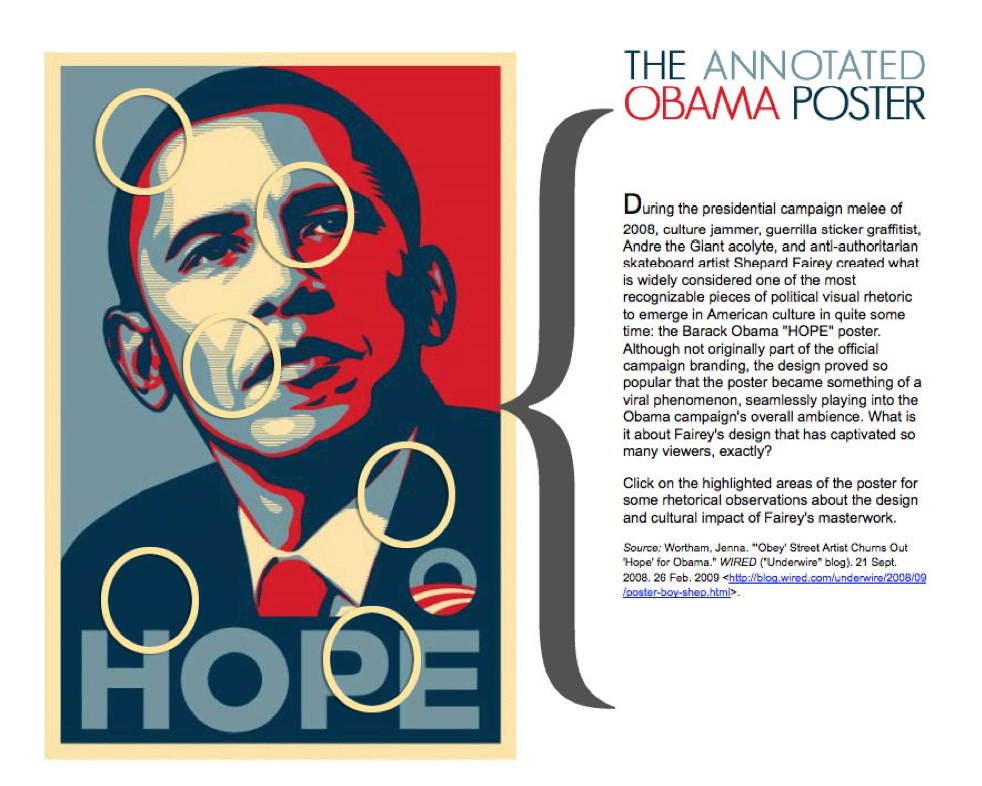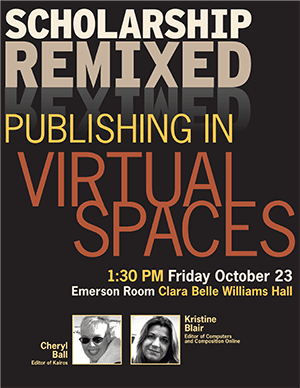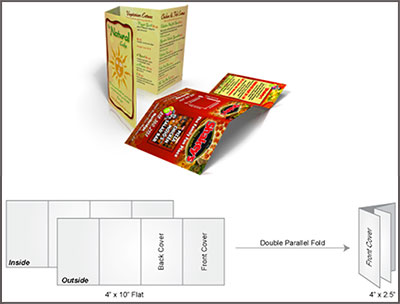I have selected a
range of reading material for this course so that we can explore
various approaches to design and visual rhetoric from multiple
perspectives. I assign reading as a way of introducing design
issues, helping us to think more critically about the communication
concepts they present, and preparing us for class discussion. It
is critical to your success in this course to complete
all assigned readings for a given day before coming
to class. Further, you should come to class ready to talk about these readings and to share your perspective. There are no right or wrong responses, so your contributions and questions are expected. In addition to the readings and discussion, we will often have small in-class assignments for applying and experimenting with ideas and technology. Your ACTIVE engagement is important for the success and usefulness of these activities.
As part of an ongoing, semester-long project, you will use Pinterest or Tumblr to collect and curate design examples from a variety of sources. Building this collection can help you to be a critical
viewer/reader and it may also spark inspiration and ideas which you can
explore in your own work. I encourage you to gather as many samples
as you can from as many sources as possible. Your collection should
contain a minimum of 30 examples (an average of two per week) by the end of the term. Each entry should have a brief annotation (a sentence or two) mentioning something specific that you like about the sample. Feel free to refer to the terms from our readings (things like contrast, repetition, weight, etc.) or just describe your reaction.
We will create accounts (if you don't already have one) for this assignment in class. You'll then email me your user ID so that I can follow you on Pinterest or Tumblr and so that we can easily view your examples during class. You can add images from the web, upload photos from your camera or phone, and/or scan print documents you encounter.
 Purpose: Purpose:
The purpose of this assignment is to demonstrate your ability to "read" and make meaning from the rhetorical messages embedded within a visual text. You will select and analyze a contemporary image, creating a minimum of five annotations of what and how various elements or features function in communicating meanings. As Sonja Foss argues,
The study of visual imagery from a rhetorical perspective... has grown with the emerging recognition that visual images provide access to a range of human experience not always available through the study of discourse... Conceptualized as a communicative artifact, visual rhetoric is the actual image rhetors generate when they use visual symbols for the purpose of communicating... Key to a rhetorical perspective on images and what makes the perspective a rhetorical one is its focus on a rhetorical response to an image rather than an aesthetic one... In a rhetorical response, meaning is attributed to the image. Colors, lines, textures, and rhythms in an image provide a basis for the viewer to infer the existence of images, emotions, and ideas (from "Theory of Visual Rhetoric")
What to Do:
- Select a single still image (photo, illustration, advertisement, poster, etc.) for analysis. It should be relatively contemporary and can be well-known or not, but the original creator and publication venue should be cited.
- Annotate at least five different aspects of visual rhetoric in the image.
- Include a short (one-two paragraph) introduction with your annotated image that provides some context about the rhetorical situation, particularly the author, site of publication, intended audience, and purpose.
- Select and use a technological platform that allows for integration of the visual image and annotations (PowerPoint, Photoshop, Flash, Dreamweaver, Tumblr, Tapestry, etc.).
- Burn your project to a CD or post it to a website and send me the URL to submit it for a grade.
Grading Criteria:
Not all analyses and annotations are equally enlightening or persuasive, so select your image wisely and develop your interpretation thoughtfully. Refer back to our course readings on visual rhetoric for concepts, approaches, and elements to analyze. Projects will be graded based on the following criteria:
- Relevance of information provided in the introduction.
- Level of analysis in the annotations (what is being communicated). Remember, that analysis provides a justified interpretation, while description simply states what's there.
- Appropriate use of design and rhetorical language to convey analysis (how messages are being communicated).
- Quality of writing: clarity, focus, and concision.
- Functionality of your technological platform for reading the image and annotations.
This assignment is adapted with permission from Dr. Michael Neal.
 Purpose: Purpose:
Applying basic design principles outlined in Kimball and Hawkin's Document Design for Technical Communicators, and Williams' Non-Designer's Design Book, this project asks you to design a simple flyer in a rhetorically meaningful way. The intent of this assignment is to provide you with a practical, hands-on application for trying out some of the design and typography ideas we have been studying. It is also an opportunity to experiment with the basic tools and capabilities of Photoshop. Additionally, you will also write a 2-3 page reflection memo detailing the design decisions you made in relation to course readings.
Directions:
You will begin by choosing an event for which to create a flyer and analyzing the audience to whom it will be advertised. Then, applying basic design and typography principles outlined in the readings, you will use Photoshop to design this one page flyer in a rhetorically meaningful and aesthetically-pleasing way. Your new design may include images and/or color as appropriate. Your ultimate rhetorical goal should be to inform the audience about the event and persuade them that this is something they want to attend.
The technical specifications of your final flyer should be as follows:
- 8.5"x11" (landscape or portrait)
- 300 PPI resolution
- PDF format (though you'll also want to save a .psd version for yourself)
Reflection Memo:
Describing, analyzing, and justifying the choices you make in the design of your flyer is an important means for learning to be purposeful and explicit about your design choices. Your 2-3 page reflection memo should not only articulate your design decisions but should also work to connect these with what you have learned through recent course readings. Additionally, you should also address the following questions:
- What were the most important design choices you made and in what ways did they fit the rhetorical situation?
- Which design principles (refer to readings by Williams, Kimball and Hawkins, and others) did you use and why?
- What was your experience with the software you used?
- What gave you the most difficulty and why?
- What are you happiest about and why?
Grading Criteria:
Your final flyer and reflection memo will be evaluated using the following criteria:
- application of rhetorically-appropriate design principles in flyer
- adherence to technical specifications
- clear written justification of design choices referencing ideas from Williams and Kimball and Hawkins
Overview:
This assignment asks you to create an organized, usable, and visually-appealing advising document for the undergraduate program in the English Department. In addition to increasing your comfort with Photoshop and learning to use InDesign for page layout, you will also write a reflection memo in which you explain and justify the design choices you made in relation to the readings and the rhetorical situation. Producing this document will give you an opportunity not only to get more comfortable with relevant software but also to figure out ways of adjusting design elements to the needs of varied documents and users.
Directions:
For this project, you may choose to work individually or with a partner. While collaborative work can bring challenges in terms of time constraints and disagreement, it also has the benefit of sharing the workload, utilizing different skill sets, and bringing together multiple perspectives.
- We will begin by discussing project needs and intended audiences. Working for a client provides you with rhetorical and contextual constraints for shaping your approach and tailoring it to a target audience. Several English Department faculty, including the Director of Undergraduate Studies, have requested a small, pocket-sized brochure that can be handed out to students during advising appointments. Below is a list of required content, though you will need to decide how much or how little to include so that it suits the target audience and the constraints of the document's physical layout.
- Your pocket-sized brochure (aka a mini menu or pocket menu) must communicates the following information:
- Brief description of English major and four emphases available:
- English
- Creative Writing
- Language, Literature, and Culture
- Rhetoric, Digital Media and Professional Communication
- Things you’ll learn (and be evaluated on), no matter your emphasis:
- Genre: how to read and write specific kinds of texts, for specific audiences
- Logic: how to follow a complex argument, and how to make one of you own
- Context: how to situate what you read and write in larger cultural and scholarly conversations
- Grammar and syntax: how to write clear, persuasive, grammatically correct English
- Advising advice: Sign up every semester for an in-person advising appointment with the Director of Undergrad Studies to help you craft your schedule and plan your major. Bring your STAR report! All majors except seniors MUST be advised every semester in order to register.
- You can find a listing of additional (and OPTIONAL) content here, but you will want to avoid overcrowding your document or repeating too much information that is available both on the web and in print brochures in the English office.
- Your document should adhere to the following technical specifications:
- Final brochure will be 4”x10” with 8 panels (4 on the inside and 4 on the outside) as shown below- Folds to 4”x 2.5”
- Actual document size will be 4.25” x 10.25” to allow for bleed and trimming after printing
- Resolution for all included images should be 300 ppi
- Must include the NMSU logo and identify it as content for the Department of English undergraduate program
- Following peer and instructor feedback on your draft, you will revise and finalize your brochure.
- Finally, you will describe, analyze, and justify the choices you made in creating the advising document. Your 2-3 page reflection memo should not only articulate your choices but should also work to connect these with what you have learned through course readings. Additionally, your memo should also address the following questions:
- What were the most significant design and rhetorical decisions you made and how did you decide on them?
- What was your experience with the software you used?
- What gave you the most difficulty and why?
- What are you happiest about and why?
- What would you do differently if you had more time and/or expertise and why?
|


 Purpose:
Purpose:
 Purpose:
Purpose: Undergraduate Program Advising Brochure-25%
Undergraduate Program Advising Brochure-25%